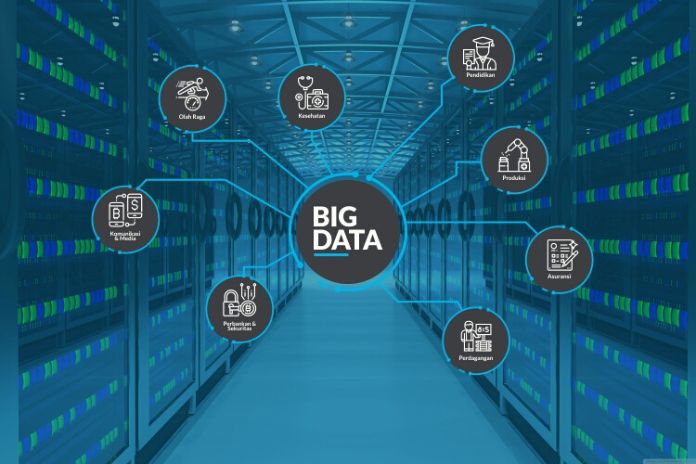Better managing the proliferation and complexity of records means having a data-driven approach to business by using Big Data Analysis to make informed decisions and anticipate the future. Here are what technologies and skills are needed to become more competitive, with updated data from the Milan Polytechnic
These are questions that are heard more and more often today, especially in Italy, where big data has recently become a must for all Italian companies aiming to transform themselves into data-driven companies to make informed decisions based on pertinent data. So let’s see in detail how to define and explain the concept of Big Data.
What Is Big Data, And What Is Big Data Analysis?
Big data (big data) is a growing amount of information that the digital transformation of business is creating and circulating inside and outside companies. Big Data, for example, comes from sensors integrated into thousands of objects which, connected to the Net, we now call the Internet of Things; according to the McKinsey Global Institute, today, they are already more than 30 million related to the network and used in the automotive, industrial, public services, or retail sectors and the number rises by 30% every year.
Beyond the data flows produced by computer systems and infrastructures supporting the production, distribution, and provision of services, big data is a phenomenon associated with a massive evolution of people’s uses and habits. Every time we use a computer, turn on the smartphone or open an app on the tablet, we always leave our fingerprint made up of data.
In 2001, Doug Laney (now vice president and distinguished analyst of the Gartner Chief Data Officer Research and Advisory Team) described in a report the Model that synthetically describes Big Data with 3V: Volume, Velocity, and Variety. Today Laney’s paradigm has been enriched by the variables of Truthfulness and Variability, and for this reason, we speak of 5V.
Big Data Analytics: From Browsers To Social Media, What Is The Meaning
Big Data, in fact, also comes from the increasingly driven multimedia that originates from the proliferation of fixed and mobile devices that we use to live and work. Familiarity with video sharing and an image culture that leads people to share all types of photographic shots will help those who know how to manage this amount of data better to understand tastes and trends and better direct decisions. Big Data comes from social media and all the information traffic that passes through the various CRM systems, from a supermarket checkout swiping a loyalty card to a phone call arriving at a call center.
Unlike many technological fads, Big Data is not a trend but a management necessity. And they are for any organization. Those growing data sets that appear to be exploding corporate databases will be the keys to competitiveness, business growth, and innovation. How? Assisting with understanding the responses of the business sectors and the discernment they have of the brands Recognizing the key factors that move individuals to buy a specific help or item
Sectioning the populace to redo activity methodologies however much as could be expected Empowering new trials permitted by the accessibility of unpublished information Acquiring consistency because of such a boundless and reliable history of data as permits reproductions that are considerably more than conceivable Empowering new plans of action
The Big Data Market
A good 2.41 billion euros is the value the Data Management and Analytics market will reach. To say it is the Big Data & Business Analytics Observatory of the School of Management of the Milan Polytechnic. Despite the difficulties of the geopolitical and economic context of the last year, the expansion of the application of Big Data, therefore, continues, marking a +20% compared to 2021 when, in the recovery phase from the slowdown resulting from the pandemic, the Analytics market had reached 2 billion euros, in turn marking a growth of +13% compared to 2020.
What drives these numbers is mainly the software component (54% of the market, +25% compared to 2021), while spending on infrastructure resources is growing less sustained, below the market average. GDO/Retail, Public Administration (PA), and Healthcare are the sectors that show the most significant growth in 2022. The Analytics budget allocated to Public Cloud services is rising at a double rate compared to the market average, and nearly a quarter of spending is on Data Management & Analytics solutions and services.
A Data Strategy Index To Indicate Industry Maturity
The novelty of this year’s Observatory is the creation of the Data Strategy Index”, an overall maturity index including three areas: Data Management & Architecture (tools, skills, and processes for technological management, data integration, and governance of information assets ), Business Intelligence and Descriptive Analytics (basic tools and skills for pervasive Business Intelligence) and Data Science (activities that include predictive and optimization analyzes starting from data analysis). According to the index above, only 15% of large companies can be described as “advanced,” while 30% are “enterprising,” 22% are “prudent,” and 33% are “immature” or “in their first steps.”
The Skills Needed For The “Data Revolution.”
As far as the digital skills needed to govern Big Data are concerned, the Observatory highlights how in large companies, there is still difficulty in introducing professional roles specialized in data management and analysis: 49% declare that they have raised at least one Data Scientist, 76% a Data Analyst and 59% a Data Engineer.
Furthermore, 66% of large companies state that they have experienced longer recruitment times and around 40% higher turnover rates.On the SAME front, 55% say they have invested in Data Management & Analytics or plan to do so by the end of the year. The percentage is growing compared to 2021, but it shows little acceleration compared to what has been recorded in the last three years. Furthermore, four out of ten companies have yet to dedicate a figure to data analysis, not even partially.
Read Also: Business Process Transformation: The Way Is The Goal



